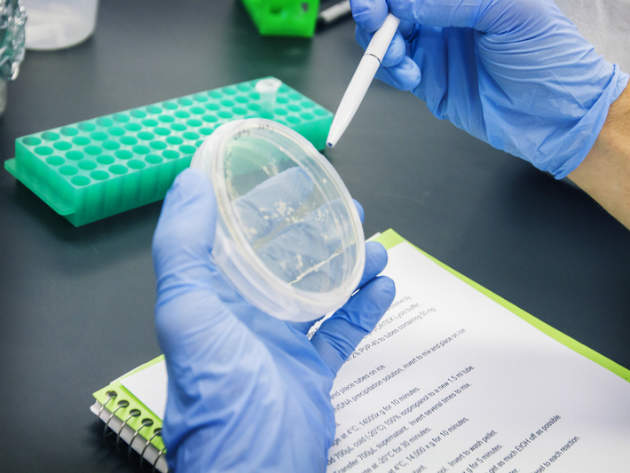

With the launch of BlueRock Therapeutics, a new cell therapy-based biotech company, Canadian regenerative medicine is taking what might be its biggest step towards bringing the incredible potential of stem cell therapies from the research lab to the clinic. Launched in December, the Toronto-based company is starting out with a much larger R&D piggybank than most biotechnology firms, having secured $225m from venture capital firm Versant Ventures and German pharmaceutical giant Bayer, in the second-largest series A financing in the history of biotechnology.
“It’s a different model from other biotechs, in that it’s cash-rich,” says Dr Gordon Keller, director of the McEwen Centre for Regenerative Medicine and scientific co-founder of BlueRock, during a presentation to journalists in Toronto in late February. “We don’t have to go back every two years to raise money; we have the money we need to make this work.”
And what exactly is BlueRock trying to make work? Advancing transplantation-based stem cell therapeutics – a potentially revolutionary but incredibly complex field that has historically struggled to translate into clinical products – from the petri dish to clinical trials is the company’s broad objective.
New therapies on the horizon
BlueRock is initially working on two main clinical branches. The first, in collaboration with Dr Lorenz Studer at Memorial Sloan Kettering Institute’s Center for Stem Cell Biology in New York, will focus on using pluripotent stem cell-derived neurons to treat Parkinson’s disease. Leveraging Studer’s long history of differentiating neurons from stem cells, the prospect of a clinical trial to study this cell therapy’s safety and effectiveness in Parkinson’s patients is just around the corner.
“The key one here is dopamine, and [Studer has] got this perfected,” Keller says. “We already have clinical brain cells ready to go into patients with Parkinson’s disease, and they expect to start the first clinical trial next year.”
At an earlier stage is BlueRock’s research into the use of ventricular cardiac muscle cells to re-muscularise the scar tissue that forms on the heart after a myocardial infarction. The project is being led by the other half of BlueRock’s regenerative medicine ‘dream team’, Toronto General Research Institute senior scientist Dr Michael LaFlamme, who initiated testing of the therapy in a pig model last summer and has gathered some encouraging heart tissue re-muscularisation results. Clinical trials are likely between four and five years away.
There are still scientific challenges to overcome, of course. The body’s immune response to newly-introduced cells will have to be considered as part of efforts to improve the survival rate of transplanted cells. The teams will also be working on reducing the invasiveness of the surgery required to carry out the cell therapy. Perhaps most importantly from a cardiovascular perspective, the source of ventricular cells must be sufficiently pure and purged of ‘pacemaker’ cardiac cells – the cells that set the rhythm of the heartbeat – as if these are placed around the lower part of the heart and conflict with the heart’s own pacemakers, the procedure could potentially be setting up a lethal arrhythmia.
“The therapy could kill you if you don’t purge these cells of pacemakers,” says Keller. “So you want really pure ventricular cells.”
Toronto’s innovation hub
It’s not only the purity of the cell production process that matters, but also the scale. The heart, for example, loses around a billion cells during a heart attack, so approximately the same number will have to be put back in to achieve the intended therapeutic effect, the researchers believe.
The company is partnering with the Toronto-based Centre for Commercialization of Regenerative Medicine (CCRM), a non-profit public-private consortium dedicated to speeding the path to commercialisation for cell and gene-based therapies. The partners are working on producing up to three billion ventricular cells in a single bioreactor, which can then be frozen away to await transplantation.
BlueRock’s work with CCRM reflects the broadly supportive and collaborative atmosphere for regenerative medicine (and other life sciences) in Toronto, particularly at the MaRS Discovery District, an urban innovation hub that houses dozens of start-ups. It already hosts CCRM, and will also be the initial headquarters of BlueRock, which plans to employ around 50-100 people in Toronto as the company ramps up.
Life on MaRS
The MaRS complex, with its mix of cutting-edge life sciences start-ups and labs, not to mention its close proximity to world-renowned medical research centres at the University of Toronto and the four major research hospitals that make up the city’s University Health Network, could be the key to help small Canadian companies navigate the tricky route from scientific potential to clinical impact.
“Canada has been lacking, for many years, in its innovation,” says CCRM president and CEO Michael May. “In fact we have a deficit in terms of intellectual property. We input much more innovation into Canada than we produce, so we don’t commercialise our great science very well, typically and historically. Organisations like CCRM and this whole [MaRS] building have been created over the last five to ten years to change that trend.”
Along with other regenerative medicine innovators moving towards clinical trials, BlueRock serves as an early indication that the strategy of creating a hub to foster collaboration in life sciences in Toronto is starting to pay off. As Versant Ventures managing director Jerel Davis noted in December when asked why the company was investing so heavily in BlueRock and Toronto: “The answer is simple – we go where the science is best.”
“We’re very excited – we believe this is going to happen not in 20 years, but the Parkinson’s trial will probably be next year, and cardiac we hope within four to five years,” says Keller. “So we don’t have to stand up in front of the crowd and say ‘20-25 years’ anymore. When I came to Toronto 10 years ago, we had a few beating cells in a dish. Now we have a company that’s going to move it towards the clinic.”



